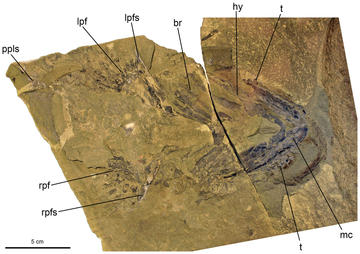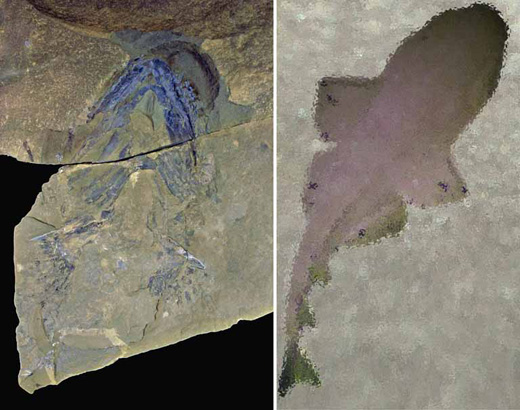

| Online: | |
| Visits: | |
| Stories: |

| Story Views | |
| Now: | |
| Last Hour: | |
| Last 24 Hours: | |
| Total: | |
New Study Identifies Ancient Shark Ancestors
New research based on x-ray imaging provides the strongest evidence to date that sharks arose from a group of bony fishes called acanthodians. Analyzing an extraordinarily well-preserved fossil of an ancient sharklike fish, researchers identified it as an important transitional species that points to sharks as ancanthodians’ living descendants. The work is published in the journal American Museum Novitates.
“Major vertebrate evolutionary transitions, such as ‘fin to limb’ and ‘dinosaur to bird’ are substantiated by numerous fossil discoveries,” said John Maisey, the lead author of the study and the Herbert R. and Evelyn Axelrod Research Curator in the American Museum
of Natural History’s Division of Paleontology.
In 2003, this question in vertebrate evolution was revitalized by the discovery of a remarkable fossil skeleton of a sharklike fish in New Brunswick, Canada. Named Doliodus problematicus, this species lived during the lower Devonian, between about 397 and 400 million years ago. When its discovery was announced, D. problematicus was shown to have paired spines in front of its pectoral (shoulder) fins, a feature otherwise known mainly in acanthodians. But in 2009 and 2014, Maisey and colleagues determined that the animal’s head, skeleton, and teeth were actually more like those of sharks than acanthodians.
The new study, based on computed tomography (CT) imaging at the French National Museum of Natural History in Paris, uncovered even more spines that are buried inside the matrix of the fossil. These spines likely lined the underside of the fish, a distinguishing characteristic of acanthodians that confirms the fossil is evidence of an important transitional species.
“The arrangement of these spines shows unequivocally that this fish was basically an acanthodian with a shark’s head, pectoral skeleton, and teeth,” Maisey said.
Other authors on this paper include Randall Miller, New Brunswick Museum; Alan Pradel and Philippe Janvier, French National Museum of Natural History; and John Denton and Allison Bronson, American Museum of Natural History.
Funding for this work was provided in part by a George Frederic Matthew Resaerch Grant from the New Brunswick Museum, the Herbert and Evelyn Axelrod Research Chair in Vertebrate Paleontology at the American Museum of Natural History, and the Richard Gilder Graduate School.
American Museum Novitates paper: http://digitallibrary.amnh.org/handle/2246/6701
Contacts and sources:
Kendra Snyder
The American Museum of Natural History
Source: http://www.ineffableisland.com/2017/03/new-study-identifies-ancient-shark.html




